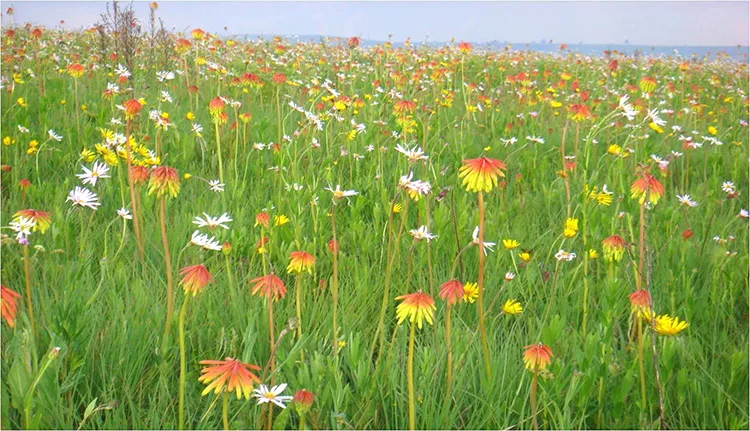Complete Guide to Saadani National Park, Tanzania
Saadani National Park is a unique safari destination in Tanzania, famous for its blend of savannah wildlife and pristine Indian Ocean beaches. It’s the only East African park that borders the sea, offering a one-of-a-kind experience for wildlife lovers and beach enthusiasts alike. How to Reach Saadani National Park By Road From Dar es Salaam Via Bagamoyo: ~131 km (2–3 hours) through Gama Entrance Gate. Via Chalinze and Miono: ~225 km (4–5 hours) to Mvave Entrance Gate. Via Mandela Junction: ~271 km, then 61 km on rough road to Mvave Gate. From Tanga By Road: ~146 km (3–4 hours) via Pangani and Mkwaja to Madete Entrance Gate. By Boat: approximately 40 km across the sea. From Arusha About 560 km via Moshi, Segera, and Pangani, or through Moshi, Segera, Kwamsisi, and Mandela to Madete Gate. By Air Charter flights are available to Saadani Airstrip or Mkwaja Airstrip from major cities including Dar es Salaam, Zanzibar, Arusha, and Tanga. By Boat Boat services operate from Dar es Salaam, Zanzibar, Bagamoyo, Pangani, and Tanga to the park, offering a scenic arrival option. Public Transportation Minibus (Dala Dala) services run between Dar es Salaam and Bagamoyo. From Bagamoyo, arrange for local transport, such as taxis or boda bodas, to the park entrance. Best Time to Visit Saadani National Park Dry Season (June to October) Optimal for wildlife spotting, game drives, and walking safaris. Animals gather near water sources; vegetation is sparse. Ideal for beach activities and boat safaris. Wet Season (November to March) Lush landscapes and excellent birdwatching, especially migratory birds. Fewer tourists, combined with short rains, mostly make access still possible. December to February: nesting sea turtles at Madete Beach. Wildlife Highlights of Saadani National Park Saadani’s uniqueness stems from its coastal landscape, combining savannah and marine ecosystems. Key wildlife includes: Big Game: Lions, elephants, leopards, buffalo, giraffes, zebras, hippos, crocodiles. Marine Life: Green sea turtles, dolphins, over 200 fish species, including flamingos, kingfishers, and fish eagles. Birds: Over 200 species, thriving across mangroves, wetlands, and grasslands. Main Attractions & Activities in Saadani National Park 1. Unique Bush-and-Beach Safari Experience The only East African park where wildlife roams along the ocean’s edge. Enjoy safari adventures combined with relaxing beach time on the Indian Ocean coastline. 2. Wildlife Viewing & Game Drives Explore open plains and woodland areas especially during the dry season for optimal animal sightings. 3. Wami River Boat Safaris Observe hippos, crocodiles, and diverse birdlife from a peaceful river cruise. 4. Green Turtle Nesting at Madete Beach Witness nesting and hatchlings of green sea turtles between February and March—an extraordinary wildlife spectacle. 5. Birdwatching Paradise Spot kingfishers, fish eagles, flamingos, and migratory birds across various habitats. 6. Guided Walking Safaris & Nature Trails Experience an immersive, ground-level view of the park’s ecosystems with armed guides. 7. Cultural & Historical Sites Visit Swahili settlements like Mkwaja and Saadani fishing village; explore colonial-era structures and local traditions. Activities to Enjoy in Saadani National Park Game Drives: Prime activity for wildlife sightings. Boat Safaris: Unique exploration of the Wami River. Beach Relaxation & Swimming: Quiet beaches are perfect for unwinding. Sea Turtle Watching: Nesting season at Madete Beach. Birdwatching: Diverse species across habitats. Walking Safaris: Close encounters with nature. Cultural Visits: Interact with local communities. Photography: Capture stunning landscapes, wildlife, and ocean backdrops. How to Plan Your Saadani National Park Safari Embarking on a safari to Saadani National Park is an exciting adventure, but proper planning ensures a smooth and memorable experience. Here’s a step-by-step guide to help you organise your trip: 1. Determine Your Travel Dates Best Time to Visit: June to October for wildlife viewing and beach activities, or November to March for birdwatching and lush scenery. Consider the climate and your preferred activities to choose the optimal season. 2. Define Your Safari Goals and Interests Are you aiming to see the Big Five (lion, elephant, buffalo, leopard, rhinoceros)? Interested in marine activities like turtle nesting or dolphin watching? Want to combine wildlife safaris with beach relaxation? Clarify your priorities to tailor your itinerary. 3. Choose Your Accommodation Saadani offers a range of lodges, tented camps, and eco-resorts. Determine your decision based on your budget, desired comfort level, and proximity to key attractions. 4. Decide on the Safari Style Game Drives: Guided in open vehicles; ideal for day and night wildlife viewing. Walking Safaris: Ground-level exploration for a close-up experience. Boat Safaris: Scenic river trips to the Wami River for birdwatching and aquatic wildlife. 5. Book Your Transportation By Road: Arrange transfers from Dar es Salaam, Tanga, or Arusha. By Air: Charter flights to Saadani Airstrip or Mkwaja are available. Local Transport: Use taxis, boda bodas, or organised transfers once in the region. 6. Plan Your Itinerary Allocate days for game drives, boat safaris, beach relaxation, and cultural visits. Balance adventure trips with downtime to enjoy the beaches and scenic landscapes. 7. Pack Appropriately Light, breathable clothing is suitable for hot days. Safari gear: binoculars, camera, hats, sunglasses, insect repellent. Beachwear for relaxation and swimming. 8. Contact Travel Experts Consider working with experienced safari operators, such as Kanuth Adventures Safari. We can help with personalised itineraries, best travel dates, and logistics. Ready to Start Your Saadani Safari? Feel free to reach out to us at +255 754 967 544 or visit our website at www.kanuthadventures.com to begin planning your unforgettable trip.












